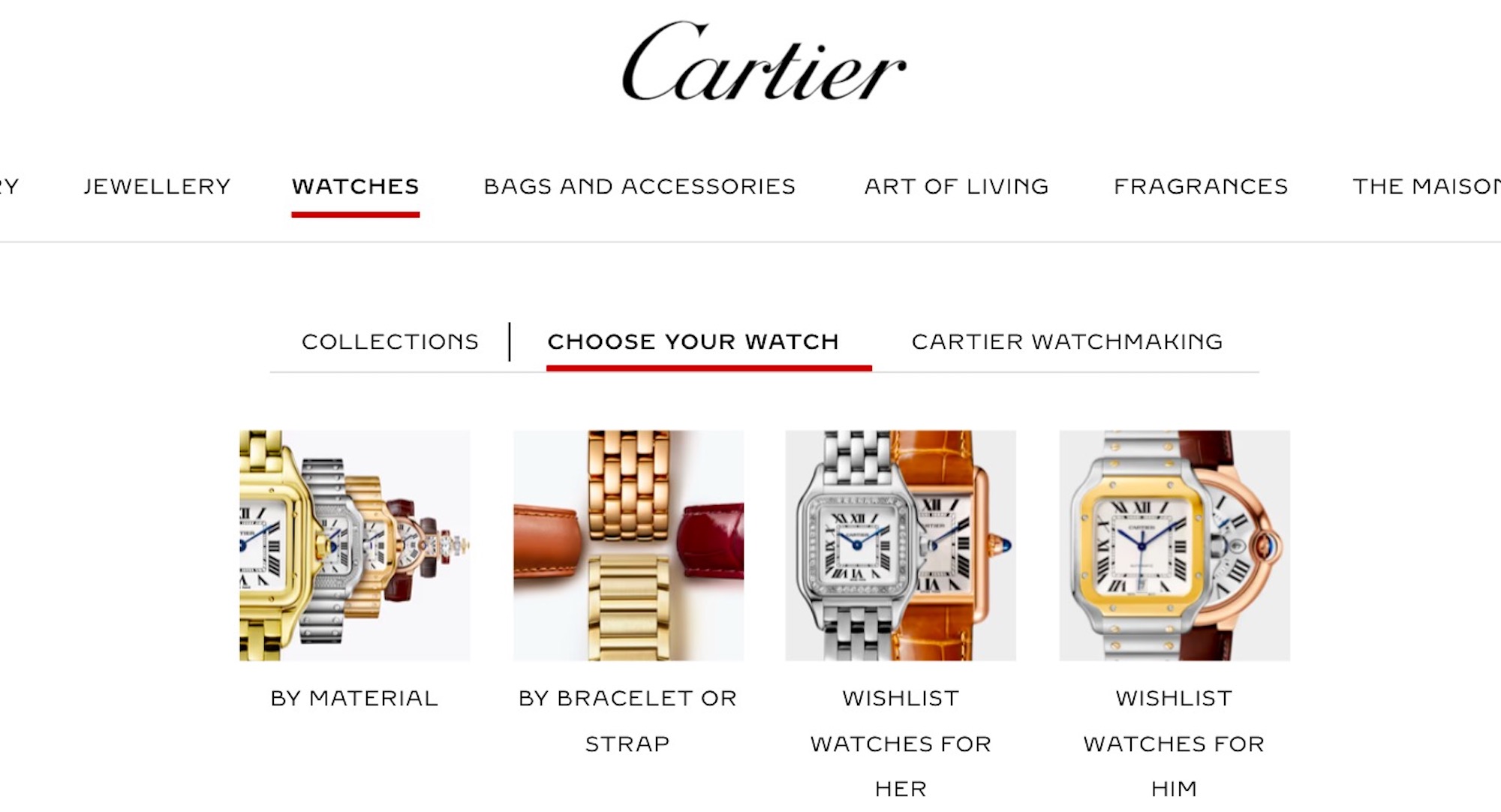 The luxury watch industry currently faces an interesting paradox with online sales. On the one hand, everyone knows that considerable luxury commercial activity is on the Internet and that e-commerce will only be a growing part of how wristwatches are sold. Over the last few years, the pandemic accelerated the existing shift of brands’ focus to online sales, while at the same time further acclimating consumers to spending big bucks online as readily as they would in person. On the other hand, at the same moment, many online watch retailers and dealers are experiencing lulls in performance and stagnant growth. This article purports to explain this situation while also recommending possible solutions for it.
The luxury watch industry currently faces an interesting paradox with online sales. On the one hand, everyone knows that considerable luxury commercial activity is on the Internet and that e-commerce will only be a growing part of how wristwatches are sold. Over the last few years, the pandemic accelerated the existing shift of brands’ focus to online sales, while at the same time further acclimating consumers to spending big bucks online as readily as they would in person. On the other hand, at the same moment, many online watch retailers and dealers are experiencing lulls in performance and stagnant growth. This article purports to explain this situation while also recommending possible solutions for it.
This discussion is relevant for at least two important reasons. The first is that investor confidence in developing serious e-commerce platforms to sell wristwatches is too low right now. Investors will certainly purchase e-commerce platforms, only to let them whither when the realization occurs that what these platforms need is more investment to develop versus more inventory to sell. Not effectively investing in novel or service-oriented e-commerce platforms is, in my opinion, part of the larger problem. For financiers to have the confidence necessary, there must be more proven profit models and routes to revenue. At this time no such blueprints exist for how to make money with an online store selling watches.

The other reason why this conversation is relevant is that it addresses a core element of the wristwatch industry’s serious last mile problem, connecting a customer with a retailer or retail method he or she wishes to transact with. The watch industry knows how to educate consumers about their brands and notify them when new watches are released. The industry is also good at making sure consumers hear media opinions about those products and are made aware of what celebrities have been seen wearing them. But how good, then, is the watch industry at actually funneling the demand they generate into a transaction at a predictable retailer? This is where today’s sales flow for luxury watches breaks down: the marketing funnel fails when it comes to guiding a consumer to a transaction point after it has established demand for a product. With the current level of fragmentation in online wristwatch retail channels, it’s often frustratingly unclear where one should purchase a watch, and from the brand side, that confusion means fewer sales and a less satisfied consumer base.
A fragmented e-commerce landscape doesn’t just mean an abundance of places to purchase a new watch at retail price, but also a deeper level of complexity where consumers have to contend with purchasing more or less the same product in various condition levels, from a variety of seller types, from an assortment of countries with different tax schemes, using a host of currencies, for products available either now or the future, at different prices points, with different types of warranties and buyer assurances, and on and on. By most reasonable measures, there is an excessive number of ways and places to buy watches online that have created a convoluted and fragmented ecosystem of wristwatch sales and commerce.
 Of course, having a variety of ways to buy watches online typically means that consumers have a buying advantage and that over the long term, better sales models will prevail. From a sheer economics and capitalism standpoint, we should encourage a natural settling of the current experimentation happening online in the wristwatch market. In principle, the highly fragmented nature of the market will calm after the current disruptive period is over. But no one can say with any certainty just how long the luxury watch industry will need to endure such a highly fragmented online market space, nor who the eventual winners will be.
Of course, having a variety of ways to buy watches online typically means that consumers have a buying advantage and that over the long term, better sales models will prevail. From a sheer economics and capitalism standpoint, we should encourage a natural settling of the current experimentation happening online in the wristwatch market. In principle, the highly fragmented nature of the market will calm after the current disruptive period is over. But no one can say with any certainty just how long the luxury watch industry will need to endure such a highly fragmented online market space, nor who the eventual winners will be.
Let’s explore in a bit more detail some of the various ways to purchase watches online. Most people don’t consider how fragmented the space is until they really think about the various options available to consumers. If consumers want to purchase a new watch, the first basic question is whether they want to purchase directly from a watch brand or from a third-party authorized dealer. If a third-party dealer is chosen, then consumers have to make a variety of decisions including what dealer they feel comfortable dealing with or who is willing to ship to where they live. Consumers also have the option of purchasing new watches from non-authorized (gray market) dealers and sites, like Jomashop.

If a consumer wants to buy a used watch, then the options for where to purchase increase considerably. In addition to the many authorized dealers that carry a selection of used timepieces, and the brands that have certified pre-owned offerings, there are a variety of online auction houses or sites like eBay that facilitate private auctions. There are also large platforms like Chrono24 where dealers and private sellers can list inventory as well as a myriad of smaller used or vintage online watch stores (many of which cross-list their inventory). Customers can also interact directly with peers via various forums and other platforms like Reddit which allow unsecured transactions between users.
Especially after all the time it takes to select a watch in the first place, most consumers don’t want to spend as much time considering where to purchase the watch. (Recall for instance that a Google search term result page has a list of about 10 items on it, and most people don’t go past the first page.) While choice is something consumers demand, excessive choice is known to contribute to acute choice paralysis. In that instance, having too much choice leads to consumers making very few decisions. This, however, is not the key problem with having too much e-commerce channel fragmentation. For the purposes of this article, the problem is that it leads to so many competing sales platforms that the industry cannot rally behind any of them.

The key problem with having so many different sales channels online is that many of them also come with their own ecosystems and cultures. Each of these systems must be nurtured and developed, which requires time and money. Rather than companies traditionally being able to benefit from the development of sales channels that they mutually share, the Internet frontier mostly has companies developing siloed systems and channels that merely exist alongside one another. A good example would be how watch brands may have traditionally rallied behind a particular department store that sold their watches. Even though the department store sold competitor products, the department store itself was an important channel and each of the brands in the store wanted the store to be as powerful a driver of sales as possible. Those brands might each contribute to a marketing budget used by the department store to advertise itself to customers. Knowingly or not, those watch brands mutually invested in a single sales channel, with the effect of helping to strengthen that sales channel for the benefit of all. A stronger department store meant a more impactful and grander relationship with the community. That meant more interested buyers and thus a higher chance for any given item in the store to sell. Investment in an unfragmented sales channel — the department store — yielded success for brands that relied on that channel.

The most common retort you will hear from a watch brand manager these days when being confronted with this logic around online sales channels is, “We don’t need them.” There is a strong and compelling belief that the power of the Internet allows any brand to directly reach customers without the messiness or revenue-sharing that comes with selling through retail partners. In theory, that is true. With enough money and gumption, anyone with something to sell can use paid or earned media on the Internet to reach most adults out there. What then has been the outcome of many watch brand managers executing this belief over the last few years? Watch brands with e-commerce websites that lack compelling content or any ongoing strategy to get traffic. Add on top of this the proliferation of start-up watch retailers online selling new, used, and everything in between, and you have a veritable soup of online watch retailers for consumers to spoon through.
The real problem has to do with the true costs of being a successful e-commerce giant. It isn’t enough to have a website and people behind the scenes to ship orders. Websites have to do ongoing work to get people to visit and keep users’ attention once they get there. Convincing customers to trust you with their money and to perform risk-free high-value transactions is another issue altogether. All of this requires ongoing content, human resources, media, technology, and marketing investments. Most companies cannot afford to do all this, and thus the sales channels are not only too fragmented but often underfunded.
The solution of course is fewer places to buy watches online, with each of those places being stronger and better suited to servicing the needs of specific parts of the watch buyer market. There shouldn’t be any less investment in e-commerce for watches, but that investment should not be spread so thin. Why are there so many companies each trying to independently do the same thing, when logic dictates many of them will be stronger through teamwork? We already know that most watch buyers actually prefer to purchase watches from multi-brand retailers. So why then should each of those brands try to be a retailer unto themselves? The Internet isn’t going to make brands into highly adept sales operations. Watchmakers are far better off focusing on what they do best, which is making watches.
 The obvious argument against this approach is the watch brand’s desire to keep 100% of the sales margin as opposed to revenue sharing with a retail partner. Indeed, they are keeping more margin for sales they actually make. But those margins are quickly eaten up by the increased company overhead necessary to keep an e-commerce operating and trafficked. Over the long run, I believe that most brands profit more by consolidating their operations to make watches while supporting a retailer or distributor who will invest in market-building and sales on their behalf. The biggest problem is that there aren’t enough incentives for companies of various types to cooperate together. At least not without some further vision. Retailers will worry about already thin margins getting smaller, brands will worry about partners who erode product desirability, and consumers will continue to buy where they feel their business is the most valued. Every party will need to see the upside if they are to cooperate in online sales channels and find platforms that they are willing to support together.
The obvious argument against this approach is the watch brand’s desire to keep 100% of the sales margin as opposed to revenue sharing with a retail partner. Indeed, they are keeping more margin for sales they actually make. But those margins are quickly eaten up by the increased company overhead necessary to keep an e-commerce operating and trafficked. Over the long run, I believe that most brands profit more by consolidating their operations to make watches while supporting a retailer or distributor who will invest in market-building and sales on their behalf. The biggest problem is that there aren’t enough incentives for companies of various types to cooperate together. At least not without some further vision. Retailers will worry about already thin margins getting smaller, brands will worry about partners who erode product desirability, and consumers will continue to buy where they feel their business is the most valued. Every party will need to see the upside if they are to cooperate in online sales channels and find platforms that they are willing to support together.
The economic market equivalent of natural selection will be the strongest force that helps calm the current state of watch sales market fragmentation online. Even if everyone agrees there are too many options for buying watches, that doesn’t mean those options will suddenly go away. Watchmakers and retailers are desperately trying to find revenue models that lead to growth online. Until a few such revenue models are established, the evolutionary experimentation will go on. Stakeholders in the watch industry should at least be aware of the fragility of the fragmented market status quo and ideally should be planning to experiment with joint sales platforms that they are willing to share with others. I envision an online version of department stores that blends the tradition of beautiful marketing catalog graphics creation with sweeping online advertising campaigns and human-focused customer service. The Internet needs a few dozen stores like that as opposed to the fragmented chaos of the now hundreds or thousands of smaller outlets that currently exist. Let me know your thoughts about fragmentation and online watch sales in the comments below.

